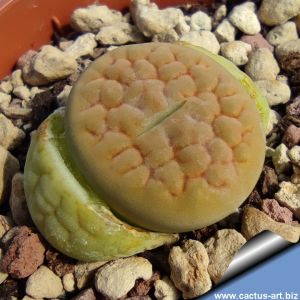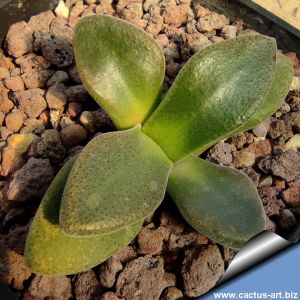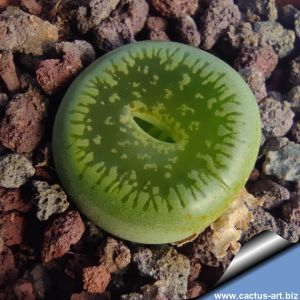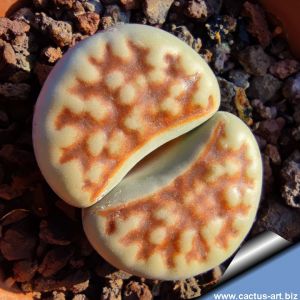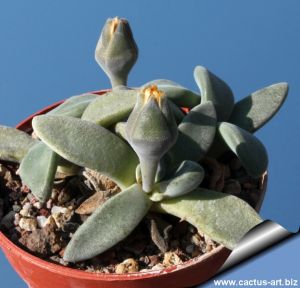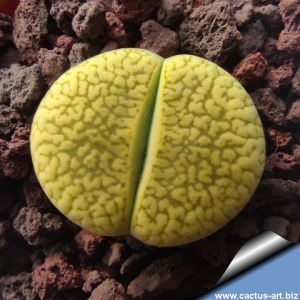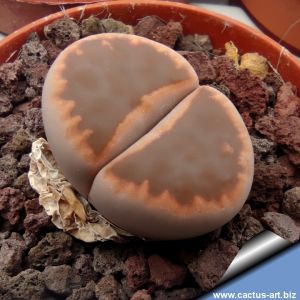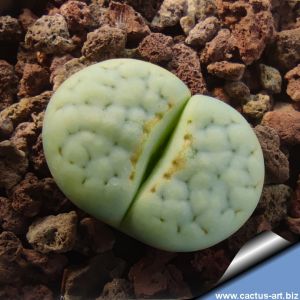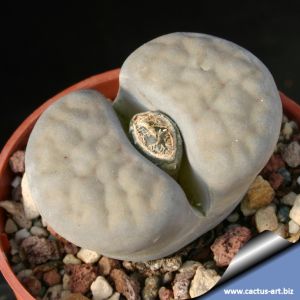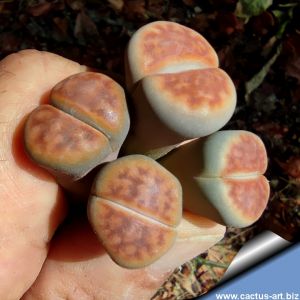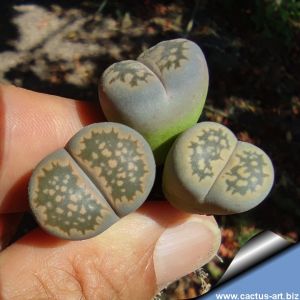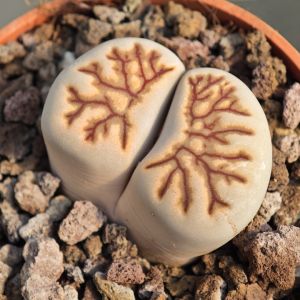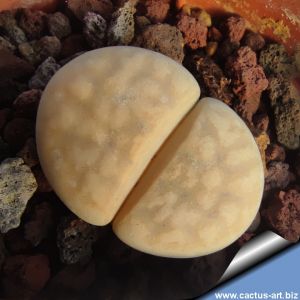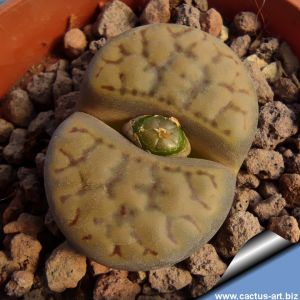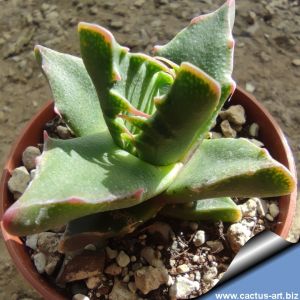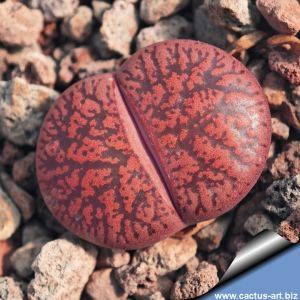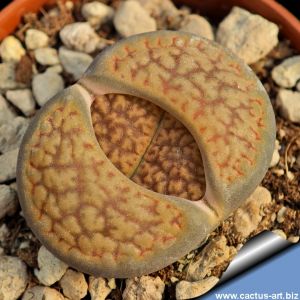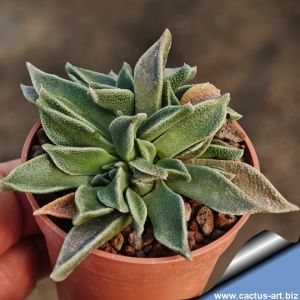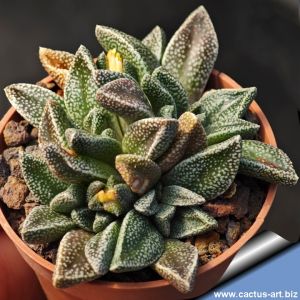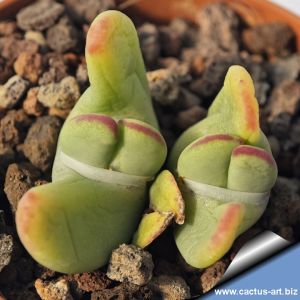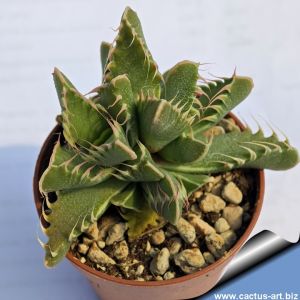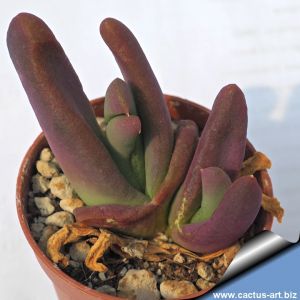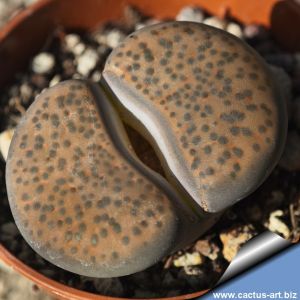-
1
Orange-yellow body infused with lime green, etched with an ochre vein network. Stunning amber-jade color interplay. Limited stock available.
-
2
Soft felty leaves, yellow flowers.
-
3
Yellow top, lined rim.
-
4
Lithops karasmontana 'lateritia reticulata' is a very pretty species with a noticeable reddish-brown network on the pink-grey top. BEAUTIFUL.
-
5
Pale orange grey with branching lines.
-
6
Yellow, honey scented flowers. Velvety grey leaves.
-
7
Green to ochre yellow depending to exposure and growing phase.
-
8
Lithops terricolor 'Green Sandport' features cone-shaped bodies with rounded light yellow-green tops dusted by dark green dots.
-
9
SPECIAL SELECTION. Only selected specimens with large open windows. Rusty-red. RARE.
-
10
Pale cold green top.
-
11
Truncated lobes. Greysh-white with creme, pink or yellow hues. Slightly marbled. Very stone-like.
-
12
Light grey, faint red lines.
-
13
Mix of Ophthalmophyllum, featuring various species, hybrids, and seed-grown cultivars. Each plant is one-of-a-kind, with unique shapes, and flowers colour ranginnng from pure white to purple, including pink and violet.
-
14
-
15
-
16
Shoulders, edges, and islands light grey, sometimes with pink, yellow, blue, green, or beige tones. Windows and channels milky blue, pale pink, or yellow-grey, mauve, pink, or rust-brown, often with a thin brown or greenish-brown line along the margins.
-
17
The greyish-pink top displays a delicate, tree-like pattern, resembling precise sculpting. Branches are deep brick-red on a mustard background. The intricate network and strong color contrast create a striking, artistic appearance.
-
18
Pale stone grey.
-
19
Variable, dark brown to milky green.
-
20
The most notable feature of Mestoklema is its thick rootstock. This species is popular with bonsai enthusiasts. It endures temperatures several degrees below freezing without complaint.
-
21
-
22
Wine red top, with dark markings, super plants and rare!
-
23
Jagged windows more or less open or reticulate, blue grey to dull ochre-grey.
-
24
Pretty brown-red top with brown lines, very nice.
-
25
The upper surface of the leaf is densely covered with large white tubercles and fierce-looking teeth (but soft to the touch). Very distinctive.
-
26
Grey-green leaves turning purple under sun/water stress. Yellow flowers with bold red midribs. Hardy (-12°C) in well-drained soil. Excellent for rock gardens, gravel gardens and drought-resistant landscaping.
-
27
Forma cespi di foglie carnose a forma di dita, color verde-argenteo o grigio-bluastro, spesso con margini violacei o giallastri. Fioritura estivo-autunnale con grandi fiori simili a margherite, rosa, magenta o viola.
-
28
A nice selection with pink-violet bodies and intricate darker blood-red patterns. With age, it may form small clusters of up to 12 or more bodies (mostly 2-5).
-
29
Compact rosettes with blue-green, white-dotted triangular leaves. In autumn, it blooms with golden to pink flowers, carmine-striped. Slow-growing, cold-hardy to -12 °C, and ideal for pots and sunny or semi-shaded spots.
-
30
This is the compact, miniature form of Conophytum lacteum, a rare white-flowered variant of C. bilobum. Among the rarest Conophytum, its autumn blooms resemble white porcelain stars on miniature plants.
-
31
Fleshy, soft, and pubescent leaves, glaucous green speckled with countless dark green dots and red-tinted edges. It produces huge yellow flowers (10 cm) that create a spectacular contrast with the foliage.
-
32
Jaw-shaped leaves with flexible theet and dusted with white speckles.
-
33
Dark green leaves with long, soft, flexible teeth along the edges, resembling an alligator’s jaw. A superb and dramatic clumping plant. Produces a superb, prolonged display of yellow flowers in summer and autumn.
-
34
Plant with tongue-shaped green leaves that develop rubescent hues, shifting to red-purple in response to direct sun or light cold. Daisy-shaped yellow flowers are showy and long-lasting.
-
35
Beautiful plant echoing the colors of its native soil: body ranging from ochre to red-brown, adorned with red lines and spots.
-
36
Choice, highly attractive succulent, even when young, marked by thick white, grey or beige warts arranged regularly on the upper surface. Flowers are yellow with flesh-coloured tips. Slow-growing plants that remain rewarding for many years.

